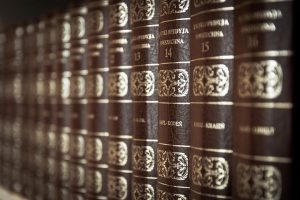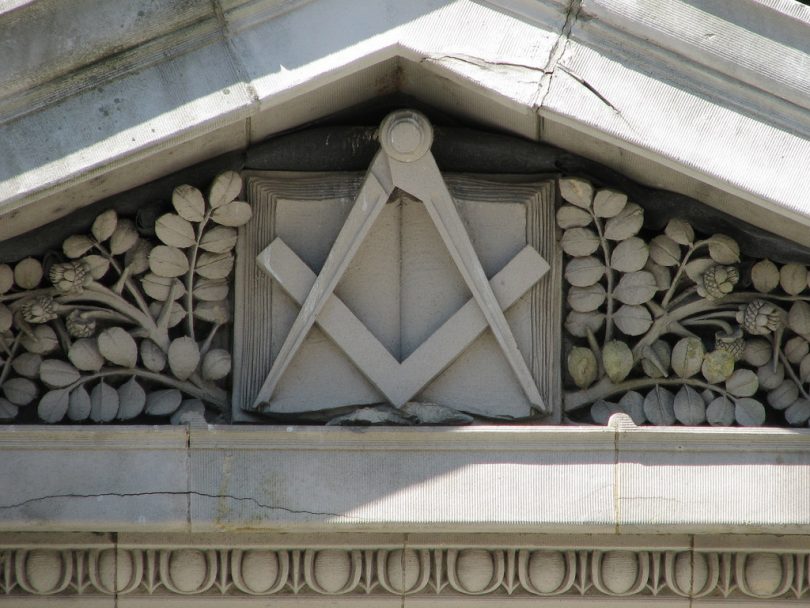Freemasonry, the noted fraternity with its mysterious meanings, was first documented in Spain around 1728. They went through periods of time in which they flourished and others in which they were demonized as heretics. The most noted down period was when General Franco banned them from the country, demolished any existence of Freemasonry, and persecuted any suspected member for supposed conspiracies against his reign. Freemasonry was legalized again after his death, and its symbols can be seen all over Barcelona to this day. Here are a few insights into the Freemason presence in Barcelona.
Related article: Catalonia’s History Museum
Table of Contents
Great Lodge of Spain



Photo by Canadian Pacific via Visualhunt
First founded in Madrid, the head of the Spanish Freemasons is now in Barcelona. It opened and closed repeatedly until the end of Francoism, and the Lodge formally moved to its current location in 2001. The Great Lodge of Spain is the regular masónica in the country and is connected with the other Great Lodges around the world. They currently have 3,000 members in 170 lodges throughout Spain. As they state, the Lodges are open to people who “make knowledge a principle of search, analysis, debate, and morality a basis for the construction of a universal ethics and humanism that can revise spirituality in our day.”
Address: Gran Via de les Corts Catalanes 617, 08007
Masonic symbols in the city



Photo by jaime.silva via Visualhunt
There are hidden symbols of the Freemasons on buildings that blend in so well, almost no one notices them. On the facade of a building at Calle Portaferrissa 11, for example, in the Gothic Quarter, a Masonic sign is represented by two boys. At Barcelona Cathedral, the Santa Llúcia Chapel features Masonic set squares and compasses discreetly on the windows and around the burials. The library of La Fraternitat in Barceloneta maintains its facade of two hands and a frame forming a triangle. There are memorials to Catalan leaders who were Freemasons, including Lluís Companys and Francesc Ferrer i Guàrdia, the ultimate Freemason symbol as they were people who represented the fraternity publically.
Biblioteca Publica Rossend Arús



Photo via Pixabay
In Eixample, the Freemasons opened their once-private library of important Masonic works, the Biblioteca Publica Rossend Arús, to the public. The library includes anarchist collections and rare magazines and literature once banned and now out of print. The reading rooms, golden frames, and marble dating back to the 19th century all make for a beautiful site for visitors. Unsurprisingly, Rossend Arús was an important Freemason in Barcelona’s artistic and political scene in the 1880s and 1890s, hosting events in his house which became an official Masonic Temple. He died leaving a trust fund to build the Masonic library which opened in 1894, closed during the Franco era, and eventually reopened once more after Freemasonry was legal again.
Address: Passeig de Sant Joan, 26, 08010
Related article: Things you probably never noticed in Barcelona
Freemasonry, one of the oldest initiatory fraternities, is based on the belief in a Supreme Being and ideas “of morality, veiled in allegory and illustrated by symbols.” It’s not a religion, but their practices are often misunderstood, and conspiracies about them being anti-Christian led to their condemnation by the Church, the Monarchy, and General Franco. Despite misconceptions about the group, symbols of their presence are can be found in most major cities in the world, including right here in Barcelona.
Looking for an apartment in the city? ShBarcelona can help you find the perfect one.
*Featured image by Usonian via Visualhunt





















This is so good , I adore to be a barcelonian free Mason
Dear Sir/ Madam,
I have read much about the freemason and I will appreciate it much if I can be a member. I live in Barcelona Spain. My telephone or is 0034600383206.
I hope to hear from you soon. Counting on your cooperations.